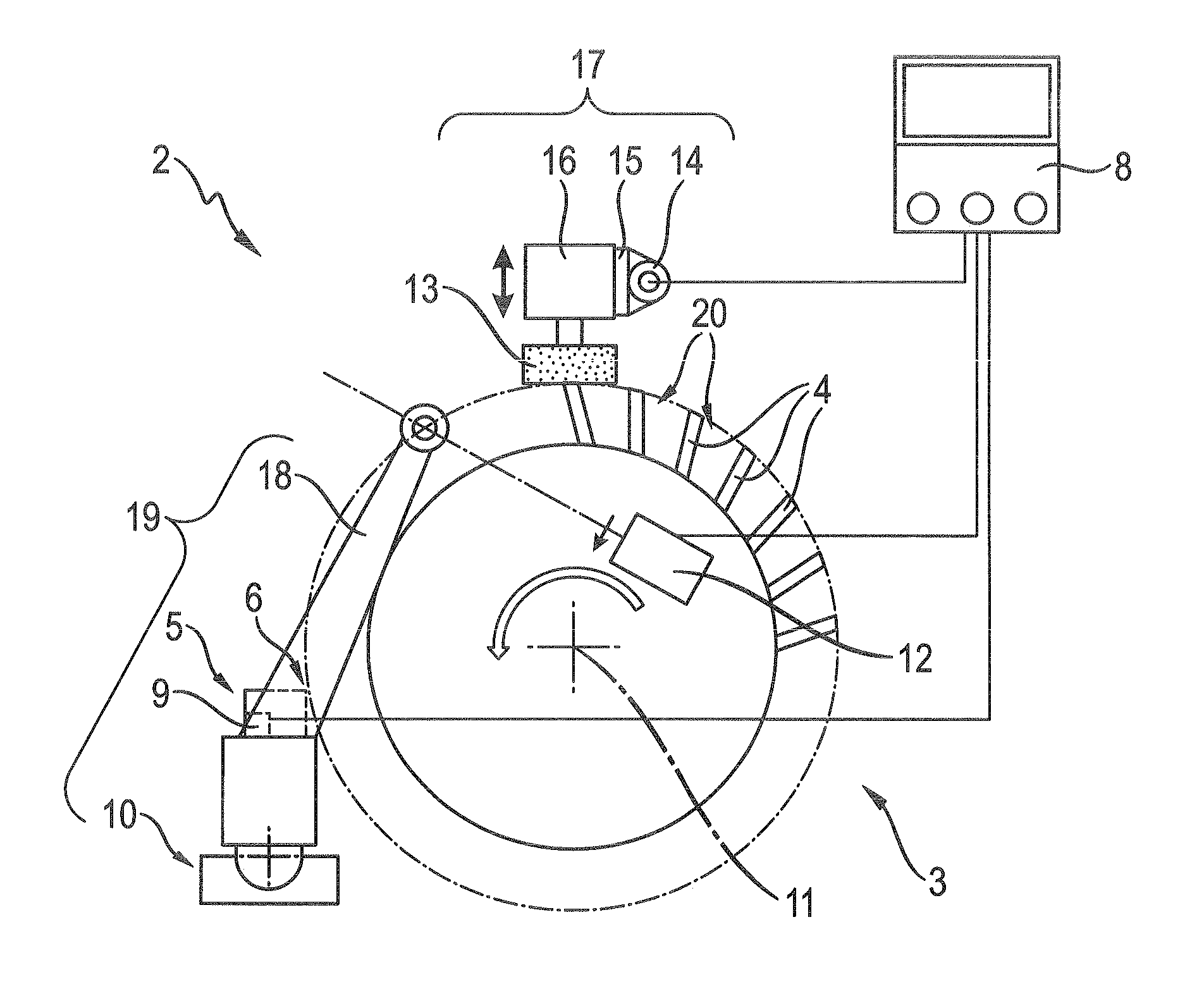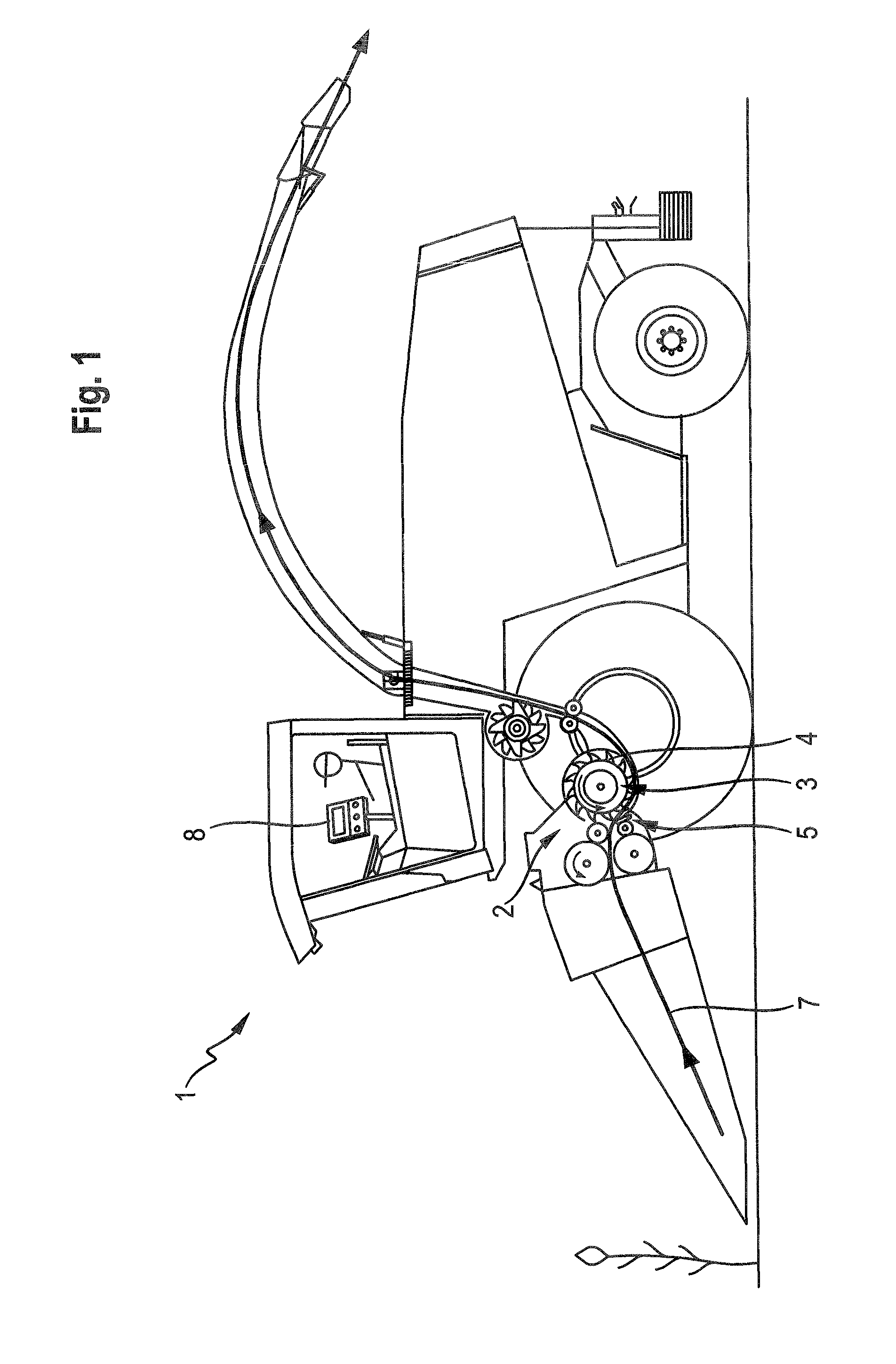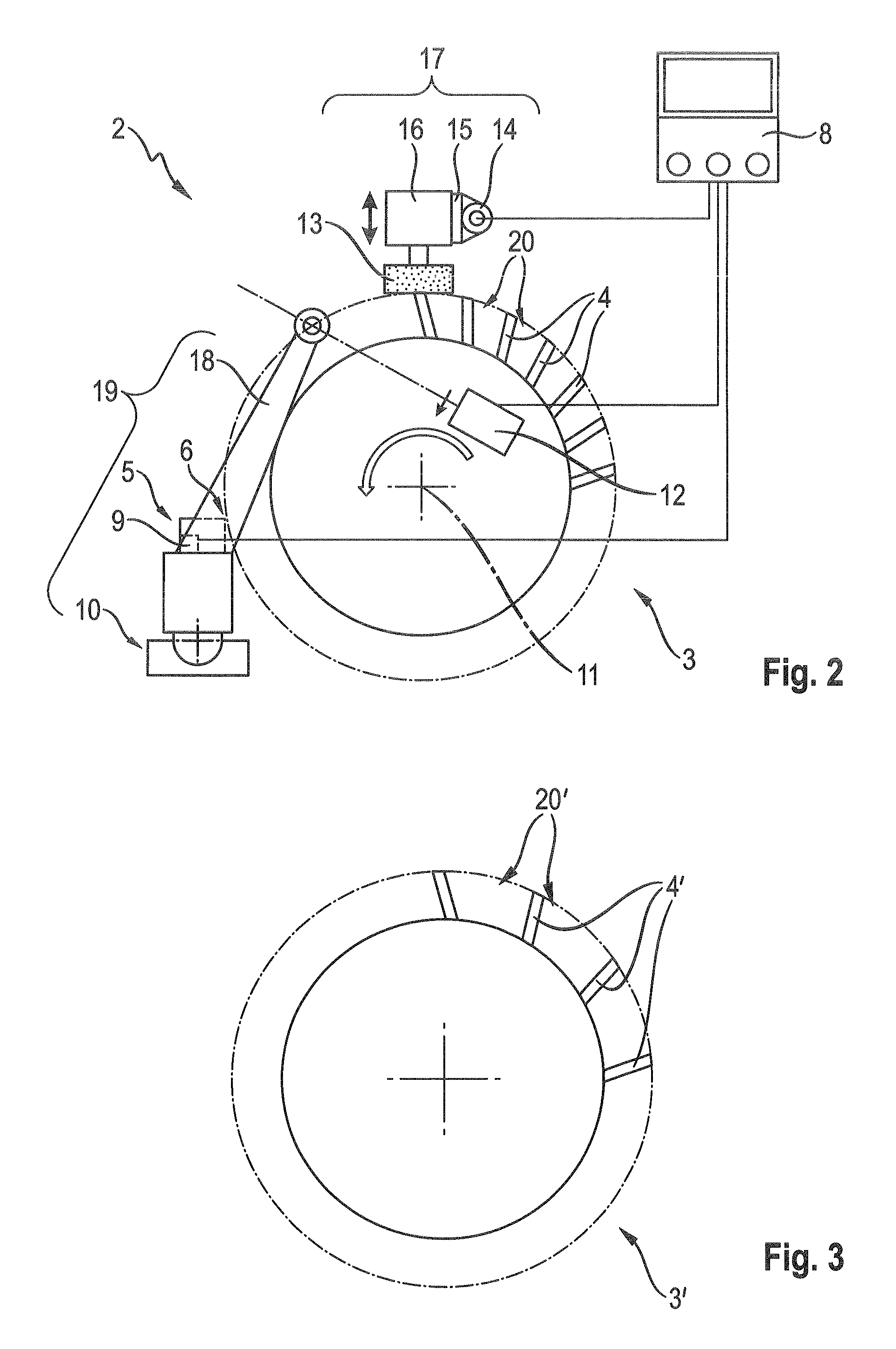Agricultural harvesting machine with device for maintaining a comminution assembly
a harvesting machine and comminution assembly technology, applied in the field of agricultural harvesting machines, can solve the problems of increasing the energy consumption of driving the chopping assembly, reducing the quality of chopping, and reducing the wear of the chopping blade and the shear bar of the chopping assembly, so as to reduce the oscillation, reduce the noise, and increase the rotational speed
- Summary
- Abstract
- Description
- Claims
- Application Information
AI Technical Summary
Benefits of technology
Problems solved by technology
Method used
Image
Examples
Embodiment Construction
[0024]The following is a detailed description of example embodiments of the invention depicted in the accompanying drawings. The example embodiments are presented in such detail as to clearly communicate the invention and are designed to make such embodiments obvious to a person of ordinary skill in the art. However, the amount of detail offered is not intended to limit the anticipated variations of embodiments; on the contrary, the intention is to cover all modifications, equivalents, and alternatives falling within the spirit and scope of the present invention, as defined by the appended claims.
[0025]FIG. 1 shows an agricultural harvesting machine in the form of a self-propelled forage harvester 1. The forage harvester 1 has typical features of a forage harvester, which are known per se and are therefore not explained in detail herein. During the harvesting operation, the forage harvester 1 is used to comminute (“chop”) picked-up crop 7, which is fed to a chopping assembly 2 in th...
PUM
 Login to View More
Login to View More Abstract
Description
Claims
Application Information
 Login to View More
Login to View More - R&D
- Intellectual Property
- Life Sciences
- Materials
- Tech Scout
- Unparalleled Data Quality
- Higher Quality Content
- 60% Fewer Hallucinations
Browse by: Latest US Patents, China's latest patents, Technical Efficacy Thesaurus, Application Domain, Technology Topic, Popular Technical Reports.
© 2025 PatSnap. All rights reserved.Legal|Privacy policy|Modern Slavery Act Transparency Statement|Sitemap|About US| Contact US: help@patsnap.com



